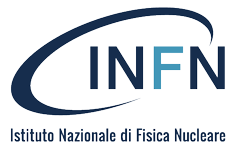In working to broaden the scope of our knowledge, experiments in subnuclear physics explore two different and complementary frontiers of our experimental limits: energy and luminosity. We therefore use ever-more powerful particle accelerators to achieve ever higher collision energies and the formation of new particles (as in the LHC). Alternatively (or, with the LHC, at the same time) we seek to produce the rarest events and to achieve an extreme fine-tuning of the precision measurements for such events. Generally speaking, experiments in subnuclear physics involve the use of large, highly complex equipment based on the latest technology in the field of detectors, electronics, data acquisition and computing systems. Collaborations to build this equipment involve hundreds of physicists from institutes and laboratories around the world (thousands in the case of the LHC). These projects are significant examples of real international cooperation, bringing together the world’s best physicists and providing an opportunity for young scientists to gain experience and learn fundamental skills. In this context, groups from the INFN contribute with their expertise and hold key positions in the relative decision-making processes.
| EXPERIMENTS 2025 | ||
| AMBER | ||
|
ATLAS
|
https://web.infn.it/atlas/ | |
|
BELLE2
|
https://web2.infn.it/Belle-II/ | |
|
BESIII
|
http://bes3.ihep.ac.cn/ | |
|
CMS
|
https://cms.infn.it/ | |
| DUNE | https://www.dunescience.org/ | |
| ENUBET_NP06 | https://www.pd.infn.it/eng/enubet/ | |
|
GMINUS2
|
http://muon-g-2.fnal.gov/ | |
| HYPER_K | https://www-sk.icrr.u-tokyo.ac.jp/en/hk/ | |
| ICAR_US | https://icarus.fnal.gov/ | |
| IGNITE | ||
|
LHC-b
|
http://lhcb.web.cern.ch/lhcb/ | |
|
LHC-f
|
https://home.cern/science/experiments/lhcf | |
|
MEG
|
https://meg.web.psi.ch/ | |
| MUONE | https://web.infn.it/MUonE/ | |
|
NA62
|
http://na62.web.cern.ch/NA62/ | |
|
P-Mu2E
|
http://mu2e.fnal.gov/ | |
| PADME | https://padme.lnf.infn.it/ | |
| RD_FCC | https://web.infn.it/RD_FCC/ | |
| RD_FLAVOUR | ||
| RD_MUCOL | ||
| SNDLHC | https://snd-lhc.web.cern.ch/ |




